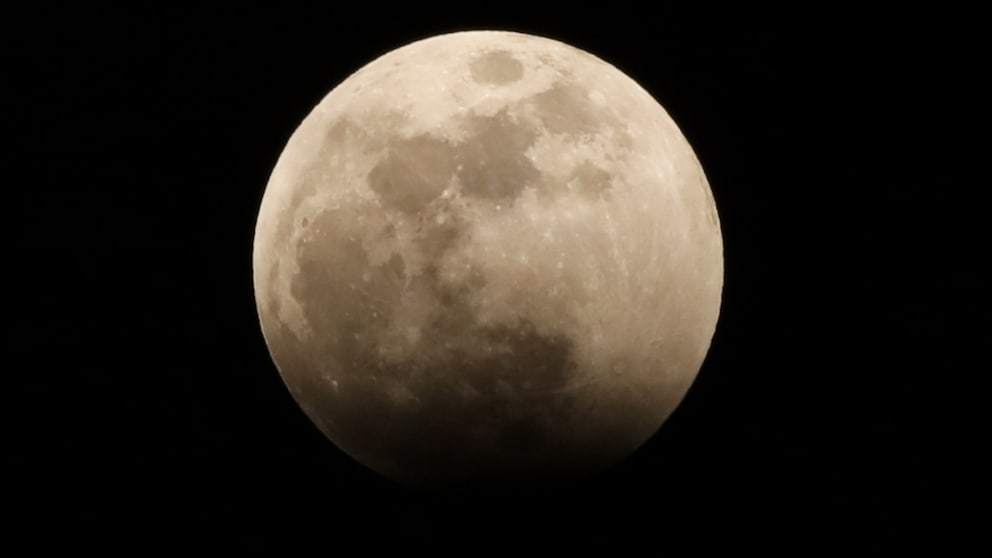April 19, 2025, 12:34 pm | Read time: 4 minutes
Smartphones can now be used to take excellent pictures. However, due to their compact design, they have limitations compared to large cameras. Especially if you want to capture special events such as a lunar eclipse. There are, therefore, a few things to consider beforehand.
If you want to photograph a total lunar eclipse, you can also take impressive pictures with a smartphone. However, a few preparations are necessary to get razor-sharp and detailed images. TECHBOOK explains how to optimally set up your smartphone and which tools will help you capture a lunar eclipse in all its glory.
Overview
The Right Time and Location
A total lunar eclipse is a special natural spectacle that is rarely seen. The so-called “blood moon” phenomenon, in which the moon appears in a reddish light, is particularly impressive. To take the best photos with your smartphone, you should be well prepared. Find out the date and time of the lunar eclipse in advance. Plan enough time to set up your location. A dark location away from city lights improves visibility and image quality considerably.
The Right Equipment
Even if a smartphone alone is sufficient to photograph a lunar eclipse, additional accessories can significantly improve the image quality. A tripod ensures that images are not blurred, while an external remote shutter release prevents vibrations caused by touching the display from affecting the image. If you want to get closer to the moon and make more details visible, you can also use a telephoto lens attachment. These are already available at prices starting at around 50 euros in usable quality.
The camera app is also important. Manufacturers such as Apple, Samsung, Google and Xiaomi already offer extensive app features on smartphones with good camera equipment. However, it is important that the apps also allow manual setting options. This is important for individually adjusting parameters such as ISO value, exposure time and focus.
Therefore, pay attention to the following things:
- Tripod: Reduces camera shake and ensures sharp images.
- Remote or self-timer: Avoids camera shake caused by touching the display.
- Telephoto lens attachment: Increases the magnification of the moon and improves the level of detail.
- Manual camera app: Allows detailed settings such as ISO, shutter speed and focus.
Optimize Camera Settings
Let’s stick to the camera settings, which are essential if you want to photograph a lunar eclipse. A low ISO value between 100 and 200 helps to avoid image noise. You should adjust the shutter speed depending on the brightness of the moon and try values between 1/100 second and 1 second. In addition, the focus is manually set to infinity to optimize the sharpness of the moon. The white balance can also be set manually to correctly reproduce the natural coloration of the moon.
As a rule, standard smartphone cameras are not optimized for night photography, even if manufacturers like to promise the opposite. Photos in the dark are often enhanced by software, and automatic modes also help achieve better night shots. However, a lunar eclipse presents the smartphone with particular challenges, which is why the manual settings in the camera app are so important. This allows users to react much better to the conditions on site.
- ISO value: Keep it low (e.g. 100-200) to avoid image noise.
- Shutter speed: Experiment between 1/100 and 1 second, depending on the brightness.
- Focus: Manually set to infinity to optimize the sharpness of the moon.
- White balance: Adjust manually to capture the natural coloration of the moon.
Post-Processing Is an Important Factor
To get the best pictures, it is worth testing different settings. Exposure bracketing, in which you take several pictures with different exposure times, helps you to find the optimum settings. If your smartphone offers the option of taking photos in RAW format, you should use this function. This gives you more options when editing images later on. The HDR mode can also help to make fine details of the moon more visible.
Post-processing can make a decisive contribution to improving the quality of your moon photos. With image editing apps such as Lightroom or Snapseed, you can optimize brightness and contrast, highlight colors and reduce image noise. In this way, you can often create impressive images even from unimpressive shots.

Get the perfect Perseids photo with these tricks

What Is the Bokeh Effect in Photography and How Does It Work?

These are the 7 best high-end compact cameras at a glance
Important Tips Summarized
To take the best possible photos of a lunar eclipse, you should choose a dark, open location and prepare for the event in good time. A tripod and a remote shutter release help to avoid camera shake. Use a camera app with manual setting options and experiment with ISO values, exposure times and focus. If your smartphone supports RAW recording, you should use this option to have more leeway for post-processing.

